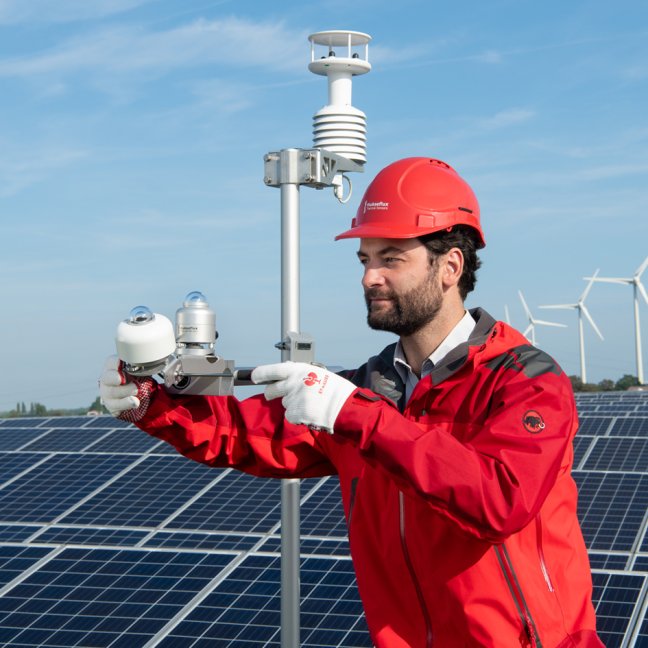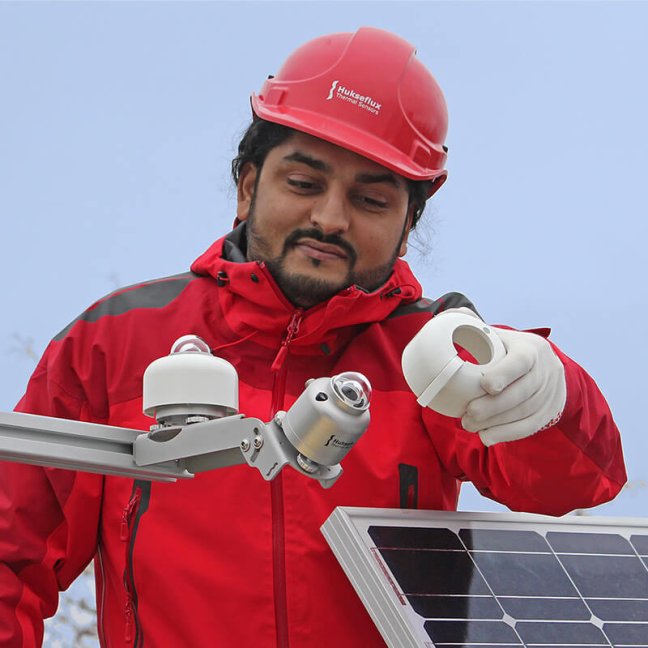How many monitoring systems on a PV solar power plant?
IEC 61724-1:2021
The 61724-1 standard for PV system performance monitoring has been revised. The latest version, released July 2021, contains a recommendation for the number of monitoring stations at a PV power plant. The numbers suggested are too low. Here is what we have found interviewing Hukseflux users.

Introduction
IEC 61724-1: Photovoltaic system performance monitoring – Guidelines for measurement, data exchange and analysis –, includes recommendations for the number of monitoring stations at a PV power plant. See below the IEC recommendations and Hukseflux’s observations of common practice in tables 1 and 2. Hukseflux sees many more stations at PV power plants than recommended by IEC.
In some cases, Class A and Class B monitoring systems are mixed. Class B systems, in such case, contain only the most important sensors; POA, GHI and PV module temperature.
Table 1 How many monitoring systems per PV power plant? Copied from IEC 61724-1: 2021 table 3. The number suggested by IEC is not a requirement, but “guidance” (IEC 61724-1 Clause 7).
PV SYSTEM SIZE (AC)
| NUMBER OF STATIONS: SUGGESTED BY IEC | COMMENT HUKSEFLUX |
| [MW] | [ # ] | Although not specifically mentioned in IEC 6172401, the suggested numbers are generally understood to be a minimum |
| < 40 | 2 | |
| 40 to 100 | 3 | |
| 100 to 300 | 4 | |
| > 300 | + 1 / every additional 200 MW | The number of 1 / 200 MW is generally considered much (at least a factor 4) too low. See next table for common practices |
Table 2 What number of monitoring stations to use? Common practices at utility scale solar power plants as observed by Hukseflux.
PV SYSTEM SIZE (AC)
| NUMBER OF STATIONS | COMMON PRACTICES AND CONSIDERATIONS AS OBSERVED BY HUKSEFLUX |
| [MW] | [ # ] | |
| all | + 1 / offtaker | In case of a large power plant with multiple offtakers (buyers of electricity): at least 1 station per offtaker In case a large power plant consists of smaller sources grouped together (together forming a VPP or Virtual Power Plant): at least 1 station per smaller source |
| all | + mixing Class A and Class B systems | In some cases, some of these added systems are not all Class A. Class B or “secondary systems” may be added to Class A systems to reduce costs. IEC 61724-1 Class B systems contain a limited set of sensors only, at least as POA, GHI and panel temperature. In such cases, the Class B systems are equipped with the same “high quality” sensors POA, GHI and panel temperature as used in the Class A systems. |
| all | + soiling systems | All systems contain soiling measurement, however, in case non-uniform soiling is expected over the power plant: add separate systems only equipped with soiling measurements. |
| all | + albedo / reflected | The optional albedo or rearside reflected irradiance measurement is often seen when bifacial systems are used. Typically at every station, however at least at 1 station / 50 MW. |
| all | + diffuse irradiance | The optional diffuse measurement is often seen when 1 axis trackers are used. Typically at 1 station / 50 MW. |
| > 10 MW | minimum number: 2 | Users consider use of Class A systems above 10 MW. |
| 20 to 40/50 MW | minimum number: 3
| Above 20 MW Class A systems are commonly required as part of asset management. Many - but not all - users prefer a minimum of 3 systems because this guarantees: - spatial coverage - redundancy of data (possibility for cross checks) - redundancy in case of system malfunction - redundancy in case sensors are sent away for recalibration |
| > 40/50 MW | + additional systems Simple rules of thumb that we see used in practice as the starting point for design: | - minimum 3 Class A, above 40 MW + 1 / 20 MW, all Class A - minimum 3 Class A, above 40 MW + 1 / 40 MW, all Class A - minimum 3 Class A, above 50 MW + 1 / 50 MW, all Class A - minimum 2 Class A, above 50 MW + 2 / 50 MW, all Class A - minimum 3 Class A, above 50 MW + 2 / 50 MW, (1 Class A + 1 Class B) - minimum 2 Class A, above 60 MW + 1 / 30 MW, all Class A |
Where can I order the standard?
The standard can be purchased from the IEC Webshop.
...
Read the full articles here:
IEC 61724-1:2021 How many monitoring systems at a utility scale PV solar power plant?










